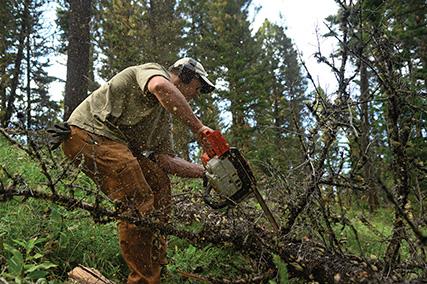Timber!
How to properly fell a tree.
Winter is coming, and so are those cozy nights nestled up next to the fireplace—sipping a hot drink, watching it snow, and listening to the wood you cut crack like popcorn as you throw another log on. But first, there's work to be done—that heat's gotta be gathered. Similar to the satisfaction one gets eating wild game, felling a tree and cutting it up for winter's firewood can be a deeply fulfilling process.
Safety First
Cutting trees isn't just a wing-it-and-see-what-happens kind of activity. If you've never used a chainsaw before, find a reliable buddy who has and have him or her take you out. First things first: a sharp saw is a safe saw. Forcing the bar through a cut is where a lot of accidents happen—the motion should feel smooth. Chaps and ear and eye protection are basic safety gear; you might even want a helmet, too. Make sure your saw is fueled with the proper mix, and that you have plenty of extra oil, gas, and chain lube. Wedges and a sharpener are standard tackle to bring along.
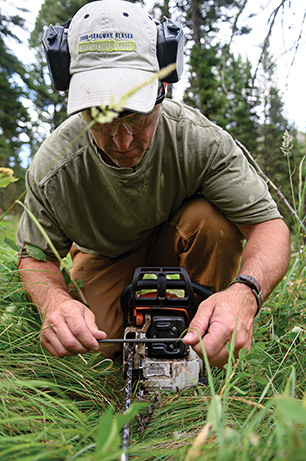
The Size-Up
Good firewood comes from trees that have been dead for at least a year—look for those big "grey-backs" that’ve had significant drying time. When you've identified your hooter, gauge its lean. A plumb bob is an effective tool if the tree is too straight up and down to simply eyeball it. Identify escape routes and clear the area around the base of the tree, including hanging branches that clothing could catch on. Have a plan A, B, and C. Take note of the wind—even on heavy-leaning trees, an unfavorable breeze can cause things to go haywire.
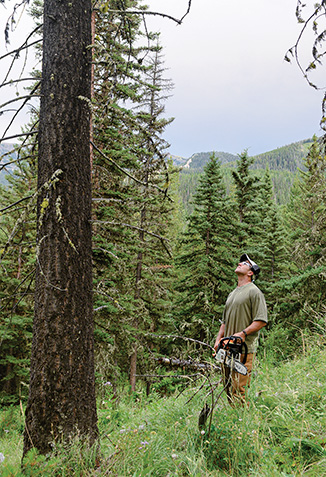
Execution
There are plenty of different ways to drop a tree. What is described is the most basic method: felling it the direction of its lean.
The first cut is called the face cut, which is actually two separate cuts that form a pie shape. Pick out a landmark in the direction the tree is leaning and with your bar against the trunk, line up the gunning sights on your saw with it. With the bar flat, at waist level or just below, make a cut about a third of the way into the tree. To complete the pie, come in above the first cut at a 45-degree angle with your gunning sights in line with the same landmark. Higher RPMs are more efficient; continue until your two cuts meet. Remove the chunk of wood and evaluate your alignment.
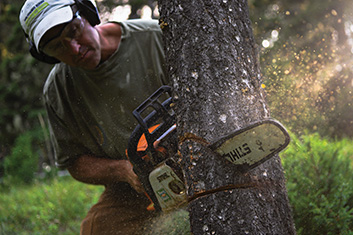
Now comes the back cut, where everything comes together. On the opposite side of the face, slightly above the bottom of the pie, make a third cut toward the center. Double and triple check your gunning sights and look up when cutting. As soon as you see the tree start to fall, take your finger off the trigger and make your way toward your escape route. It is crucial to leave some holding wood between the back and face—roughly 10 percent of the tree's diameter is a good rule of thumb. If you get within this distance and it still hasn't fallen, stop and use a wedge to finish the job.
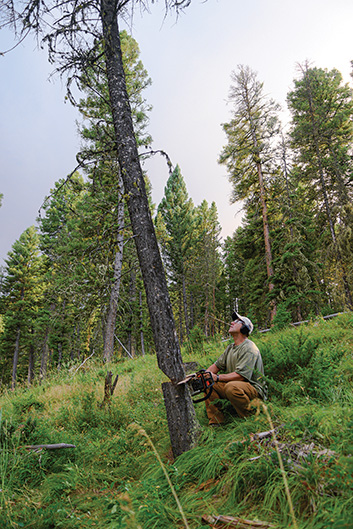
When the tree is down, start bucking and limbing. Lengths will vary based on the fireplace, but be consistent. Cutting equal rounds will save you, both in saw gas and labor down the road. There's good firewood within a 20-minute drive of Bozeman, but be sure to consult the local ranger station and acquire a permit before setting off.


